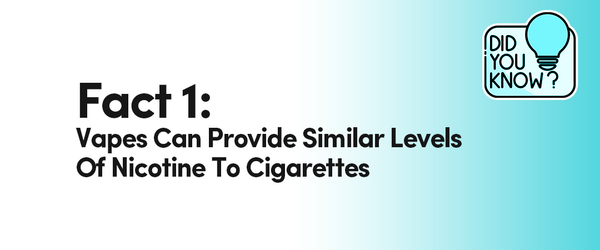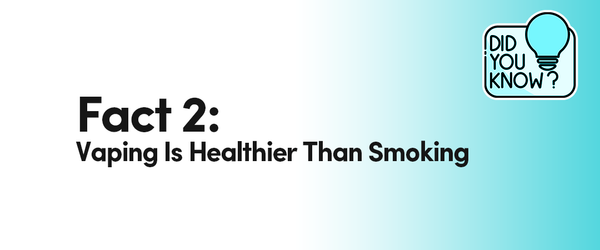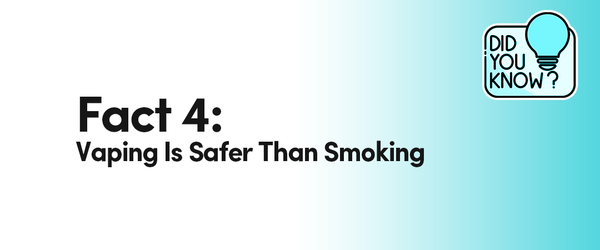Vaping To Quit Smoking - 4 Quick Facts

Tags

In the last decade, a significant number of smokers have chosen to ditch their cigarettes in favour of a less harmful alternative – the e-cigarette. E-cigarettes, otherwise known as vapes, have become a widely used smoking replacement therapy that has helped millions of people quit smoking for good.
But despite being proven as such, many remain fearful about making the transition. Is e-liquid dangerous? Why is vaping healthier than smoking? Will vaping satisfy my cravings? To answer your most pressing questions, we’ve put together some useful facts on how vaping can help you stop smoking tobacco.

A common misconception among smokers looking to make the transition to vaping is that vapes are simply not strong enough and don’t provide enough nicotine, nor an adequate throat hit. But this is not true.
E-liquids are available in a wide range of nicotine strengths to help ex-smokers find an option that best suits them. In addition to this, many vaping devices on the market today use nicotine salts instead of traditional freebase solutions. This allows you to vape using higher nicotine concentrates (e.g. 50mg) with no compromise on the all-important smooth throat hit.

Although vaping is not completely without its risks, many health organisations and official government bodies have deemed it as a less harmful alternative to smoking tobacco. That’s because cigarettes are notoriously known to contain a large amount of chemicals that cause cancer. This includes lung, liver, throat and stomach cancer to name a few.
On the other hand, e-liquids contain far less chemicals and are instead typically composed of just five basic ingredients – propylene glycerol, vegetable glycerine, nicotine, water, and flavourings. None of these have been found to cause cancer or any other serious long-term health conditions.
Although nicotine gums, patches, sprays are all viable methods of quitting smoking, none of them relieve physical urges. Part of what makes vaping such an effective smoking replacement therapy is its ability to satisfy the chemical and physical cravings. This includes hand-to-mouth action, and the acts of inhaling and exhaling.
Fortunately, there are thousands of vapes that closely mimic the look, feel and experience of cigarettes to help you avoid smoking tobacco.

Vaping has become a lot safer than it once was. There are now tough restrictions in place both in Canada and the rest of the world. The contents of e-liquid have become much more refined, and e-cigarettes must meet high safety standards before they are available to the public. Additionally, vape manufacturers are required to explicitly state all key information on their packaging, allowing consumers to make smarter, more informed choices.
Summary
In short, vaping is a much less harmful alternative to smoking tobacco and is now heavily regulated in Canada and beyond. It offers an effective smoking replacement therapy that satisfies some of the most common physical urges caused by a history of smoking.
Even the heaviest of smokers can find a suitable vaping alternative. There are a vast array of nicotine solutions to choose from, each offering a different nicotine strengths to satisfy your cravings.






